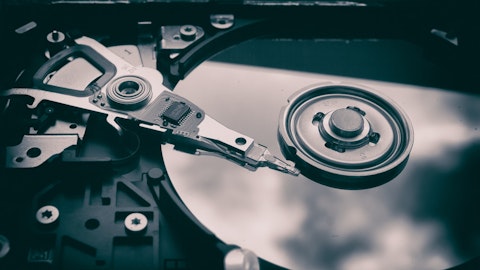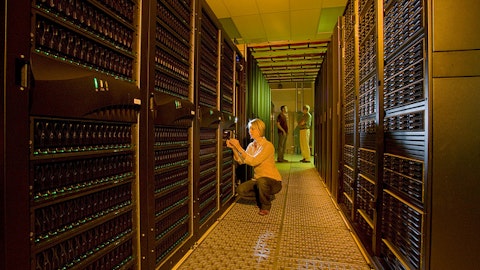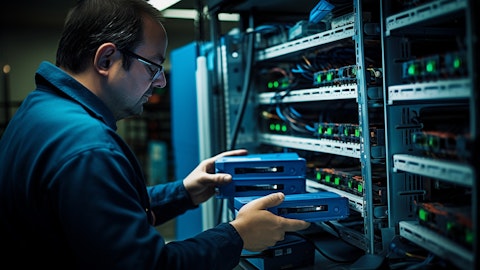Vijay Rakesh: Got it. And then on the gross margin line, sorry to [indiscernible] that, look at — do you see you guys getting back to that target window 33% exiting this year? And especially on the HAMR side, I think Dave mentioned you can do with 4 terabyte plus 5 disks or a 20-terabyte drive versus 7 to 10 disk now. What are the gross margins on HAMR versus where you see your corporate margins today, I guess.
Gianluca Romano: We know we said in the past amortized gross margin is, for sure, accretive to the corporation. So it’s always above our average. Right now, as you know, there is no HAMR drive in our results. But now we see starting in the March quarter and you already see some improvement in our guidance. It will be I expect more when we go into the June quarter and through the rest of the calendar year. So we are positive on the profitability from that product. And we need to take our time to qualify big customers and then to start ramp because, as Dave said, we take a little bit of time to rent high-volume production for the new product.
Operator: And our next question comes from Ananda Baruah with Loop Capital.
Ananda Baruah: Really appreciate it. I guess for Dave and Gianluca can jump in here, too. The hyperscalers are sort of having some conversation about data center redesign over the coming years, a lot of this is around GPU compute. But they are referring to it as data set reasons on more generally and Vale [ph]. And I guess would there — if that occurs, do you have any opinion on if there would be incremental opportunity for near-line drive that would, I guess, substantively be like in addition to whatever data growth is going on. So I just wanted any thoughts on that in any context. And that’s it.
Dave Mosley: Yes. Ananda, it’s a real complex topic. What I would say is that the compute infrastructure is changing dramatically and the memory architectures will change to support that computer architecture very dramatically as well. So there is a lot of redesign discussion going on. there are different types of applications and things that are being branded AI, there’s stuff that’s very focused on text or large language models. And then there’s image recognition and video creation. And so there’s a lot of different types of applications that propagating. And I think this is just normal application development that’s been going on for years and years and years. But I do think there’s different types of hardware. So I think there are some now AI data centers being discussed that are largely compute.
I also think that some of these applications are spinning off a lot of data and they’re requiring data to be stored for a certain period of time and then brought back up to the higher levels to be reprocessed. And so that’s just normal data growth as well. So I think the net of it is there’s a lot of architectural redesign going on, probably not affecting the tiers that we’re in. If anything and we made reference to this in the prepared remarks, there’s cost power and space or at a premium. There’s many AI applications from what I’m hearing that there’s just not enough power for and our infrastructure is going to be critical. But to the extent that you can do your part to buy transitioning to higher capacity drives that net-net gives you the same exabyte capacity with less power.
I think that’s a good thing. It may be an opportunity for us.
Ananda Baruah: So that would be in addition to like the 25% kind of data run rate driven — that sort of power as a catalyst date?
Dave Mosley: It’s hard to say. It depends on the bills and how much people are having to pay for it. Again, I think in the AI applications that are really exploding right now, power is going to become one of the limiting factors. And so to the extent that there may be a really good payoff in not only cost savings, space savings and so on but also just freeing up that power infrastructure to go to other things. I mean, that might actually help us get above the 25%.
Operator: And our next question comes from Mark Miller of the Benchmark Company.
Mark Miller: Congratulations on the launch of Mozaic. I’m just wondering, you mentioned it briefly. What kind of traction are you seeing from AI-related opportunities? And what do you — how do you see that ramping throughout the year?





